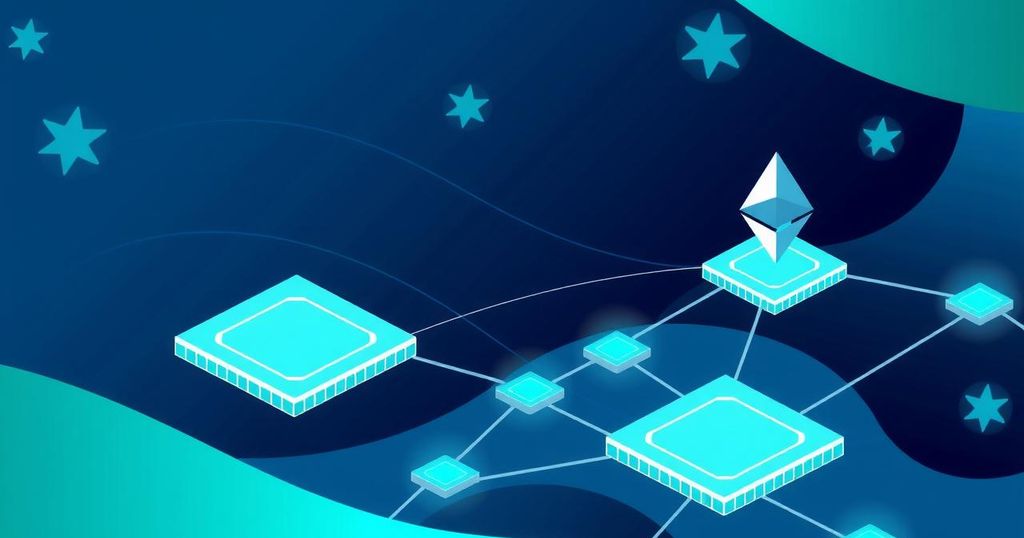Ethereum’s Pectra Upgrade: A Step Towards Modernisation and Usability
Ethereum’s Pectra upgrade launched Wednesday, aiming to improve user experience and layer 2 blockchain efficiency. It allows transaction batching and fee payments in diverse tokens, enhancing wallet functionality. Despite the advancements, Ethereum faces ongoing challenges with Ether’s value compared to competitors. Future improvements are on the horizon, including another major upgrade, Fusaka, expected later this year.
A significant upgrade to Ethereum, known as Pectra, launched Wednesday morning, promising to enhance user experience and improve the functioning of layer 2 blockchains and validators. According to one contributor from Optimism, this marks the point where Ethereum transforms into a truly modern network. The upgrade comes on the heels of previous pivotal changes, including last year’s “the Merge,” which revamped Ethereum’s consensus mechanism and drastically cut energy consumption by approximately 99%.
Pectra arrived soon after 10 am London time, paving the way for a smoother blockchain experience that many saw as a barrier to wider adoption. Historically, Ethereum has released substantial upgrades annually, continuously evolving since the Merge revamped how transactions are approved. That process shifted from a costly, energy-intensive model to staking, where users could secure the network by locking up their Ether in return for rewards.
In 2023, Ethereum developers made strides by enabling the withdrawal of staked Ether, freeing millions in previously locked capital. The following year was supposed to see a massive 98% reduction in using associated layer 2 blockchains, but Pectra takes a more diverse approach. It introduces various smaller enhancements that boost the functionality of digital wallets required for engaging with Ethereum-based applications like decentralised exchanges and lending markets.
These updates not only make digital wallets more functional but also increase layer 2 blockchains’ capacity, helping to maintain affordable transaction fees even during peak usage periods. Moreover, the upgrade makes validators—computers that process transactions and add blocks to Ethereum—more efficient. As one optimistic developer expressed on social media, Pectra cuts down the number of clicks it takes to complete transactions.
New features in Pectra include the ability for users to batch transactions and bypass the numerous pop-ups that typically plague Ethereum users. Also noteworthy is the change allowing transaction fees to be paid in various tokens rather than solely in Ether. This shift aims to provide a clearer understanding of the transaction costs. As one contributor stated, while the Merge changed operational aspects, Pectra transforms the overall user experience.
Additionally, Pectra builds upon the Dencun upgrade from last year, which introduced “blobs,” allowing layer 2 blockchains to submit compressed transaction data to Ethereum more efficiently. However, congestion on those blockchains has emerged, with dynamic fees sometimes exceeding previous levels. Nevertheless, Pectra will double the capacity for blobs Ethereum can accommodate, which should keep layer 2 fees reasonable for now.
Despite these advances, there’s concern about the future; high-profile developers like Jesse Pollak from Coinbase’s Base have pointed out that demand for transactions might soon outstrip what the upgrades are able to handle. He mentioned estimates of a 10 to 20-fold increase in usage by 2025, which might overshadow Pectra’s contributions.
One of Pectra’s key features is the ability for validators to consolidate their staked Ether, increasing from separate batches of 32 to 2,048 Ether. This lowers the operational costs for validator operators, which is a notable gain for the network as a whole. But while Pectra makes strides for usability, it hasn’t solved the pressing issue of Ether’s performance against rivals like Bitcoin and Solana. Currently, Ether’s recovery is lagging behind, prompting criticism that too much focus has gone into affordability courtesy of layer 2 blockchains.
Leadership changes at the Ethereum Foundation, a Swiss nonprofit, suggest a shift toward enhancing Ethereum directly to improve performance and cost compared to leaving it to layer 2 developers. New plans are in development, though specifics are scarce. Meanwhile, the next major upgrade, known as Fusaka, is anticipated for later this year, aiming to bolster Ethereum’s decentralisation and processing capabilities by altering how data blobs are handled.
As the Ethereum landscape changes, the direction of future upgrades and the Foundation’s strategy remains to be seen. But one thing is clear—Ethereum is actively working to adapt and innovate, constantly evolving to address user demands.




Post Comment